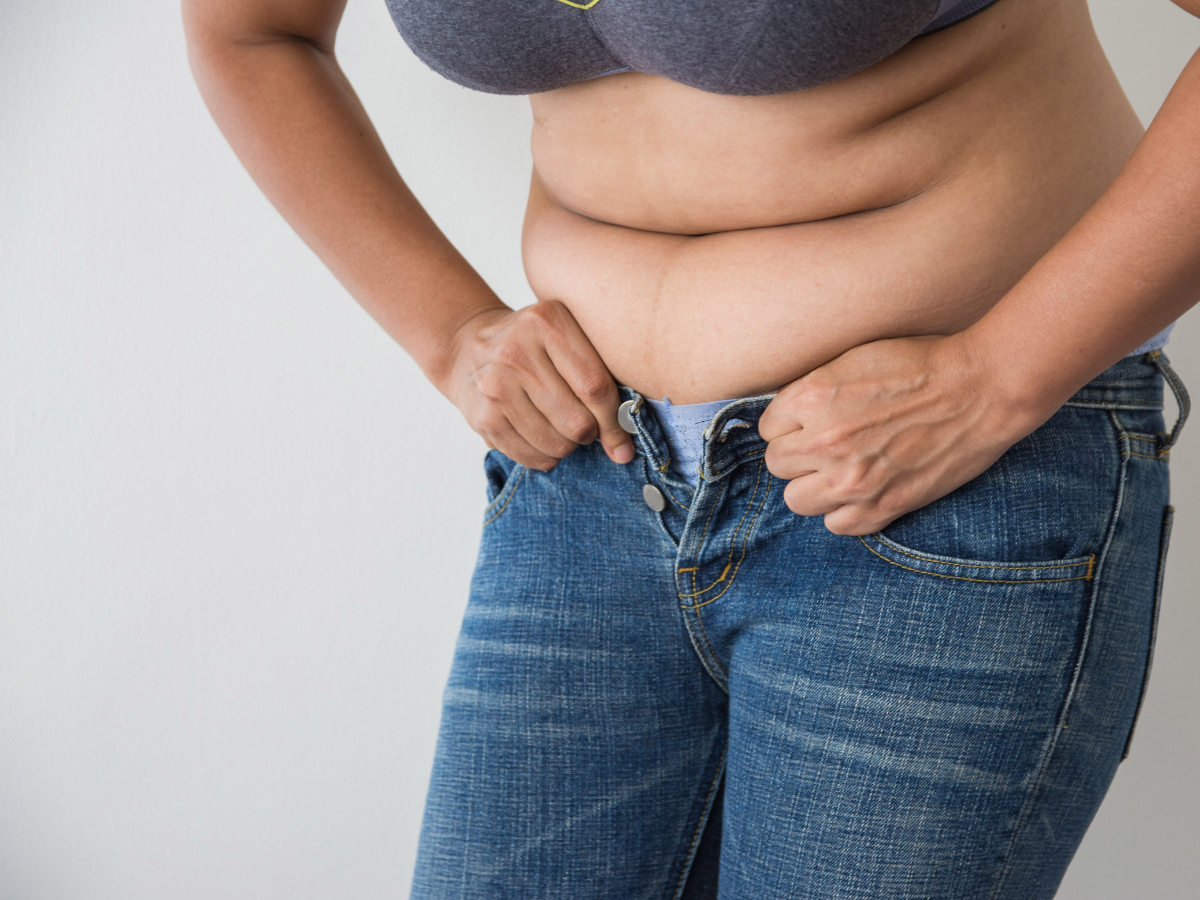Losing Stubborn Belly Fat After 40: Why It Happens and How to Tackle It
Many women find that losing stubborn belly fat after 40 becomes an increasingly difficult challenge, often feeling like an unavoidable part of aging. As the years pass, changes in body fat distribution, especially after menopause, lead to increased belly fat. While this change can be frustrating for its aesthetic impact—making clothes feel tighter—the health implications are far more concerning. Research has shown that excess belly fat carries significant health risks, but the good news is that these risks can be managed with the right approach.

Why Belly Fat Increases After 40
Understanding the reasons behind increased abdominal fat, particularly for women over 40, is the first step in addressing it. Belly fat accumulation is influenced by several key factors:

-
Caloric Imbalance: Consuming more calories than your body burns through daily activities and exercise leads to weight gain, including belly fat.
-
Aging and Metabolism: As we age, muscle mass tends to decrease, especially in those who aren’t physically active. Since muscle burns more calories than fat, this loss slows down metabolism, making it harder to maintain a healthy weight or lose fat.
Advertisement -
Hormonal Changes: For women, the decline in estrogen levels during perimenopause and menopause plays a crucial role in fat distribution. As estrogen decreases, fat tends to shift from the hips and thighs to the abdominal area, resulting in more belly fat as women age, even without gaining overall weight.
-
Genetics: Family history can affect your predisposition to being overweight and where your body stores fat.
More Than Just Skin Deep: The Risks of Belly Fat
Belly fat is more than just the pinchable layer under the skin—known as subcutaneous fat. The real concern lies in visceral fat, which is stored deep within the abdominal cavity and surrounds vital organs. This type of fat is metabolically active in harmful ways.
Excessive visceral fat increases the risk of serious health problems, including:
-
High blood pressure
-
Unhealthy blood fat levels (elevated triglycerides, low HDL cholesterol)
-
Sleep apnea
-
Heart disease
-
Type 2 diabetes and high blood sugar
Advertisement -
Certain types of cancer
-
Stroke
-
Fatty liver disease
-
Premature death from any cause
Is Your Waistline Putting You at Risk? How to Measure
A simple way to assess whether your belly fat is a health risk is by measuring your waist circumference:
-
Stand up straight and wrap a tape measure around your bare abdomen, just above your hipbones.
-
Ensure the tape measure is snug but not compressing the skin, and keep it level all the way around your body.
-
Relax and exhale normally (don’t suck in your stomach), then read the measurement.
For women, a waist measurement exceeding 35 inches (89 centimeters) is generally considered an indicator of unhealthy belly fat and a higher risk of associated health issues.

Strategies for Losing Stubborn Belly Fat After 40
While exercises like crunches can strengthen the abdominal muscles, they won’t specifically target belly fat. The good news is that visceral fat responds well to the same diet and exercise strategies that are effective for overall weight loss. Consider implementing these tips:
Adopt a Healthy Diet
Focus on creating long-term healthy eating habits:
-
Prioritize plant-based foods like fruits, vegetables, and whole grains.
-
Choose lean proteins such as fish, poultry, beans, and low-fat dairy products.
-
Limit processed meats and saturated fats found in red meats and high-fat dairy products.
-
Include healthy fats such as those found in fish, nuts, seeds, and vegetable oils like olive oil.
Manage Portion Sizes
Even healthy foods contain calories, so portion control is essential:
-
Use smaller plates to help reduce portion sizes at home.
-
When dining out, consider sharing meals or taking half home for another meal.
Ditch Sugary Drinks
Sugary beverages like soda, sweetened juices, and specialty coffees add calories quickly without filling you up. Opt for water, unsweetened tea, or other sugar-free drinks instead.
Prioritize Physical Activity
Regular physical activity is crucial for managing belly fat. Guidelines recommend:
-
At least 150 minutes of moderate-intensity aerobic activity (like brisk walking) or 75 minutes of vigorous-intensity aerobic activity (like jogging) per week.
-
Strength-training exercises at least twice a week to target all major muscle groups. Building muscle boosts metabolism.
To effectively lose stubborn belly fat after 40, you may need to increase exercise duration or intensity. High-Intensity Interval Training (HIIT) and consistent strength training are particularly effective in reducing abdominal fat.
Conclusion
Losing stubborn belly fat after 40 requires commitment, patience, and a combination of dietary changes and regular exercise. Rather than focusing on quick fixes, aim for gradual and sustainable weight loss to remove the excess fat and prevent it from returning. Addressing belly fat is not just about appearance; it’s a crucial step in reducing health risks and improving overall well-being as you age. Consult your healthcare provider for personalized guidance to help you stay motivated and reach your health goals.






